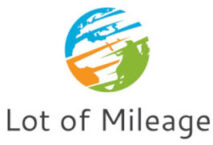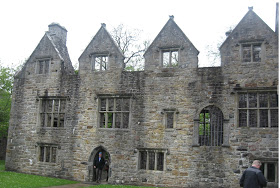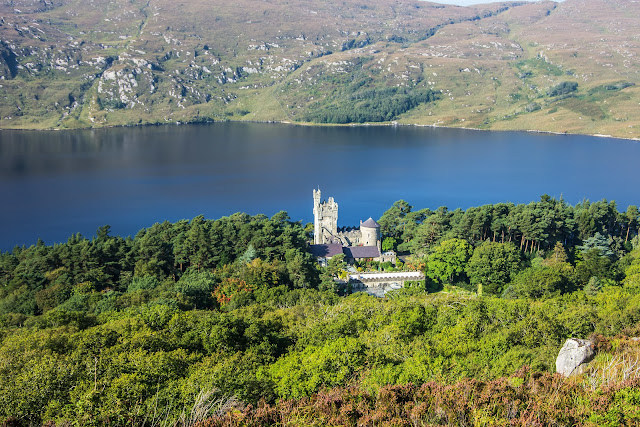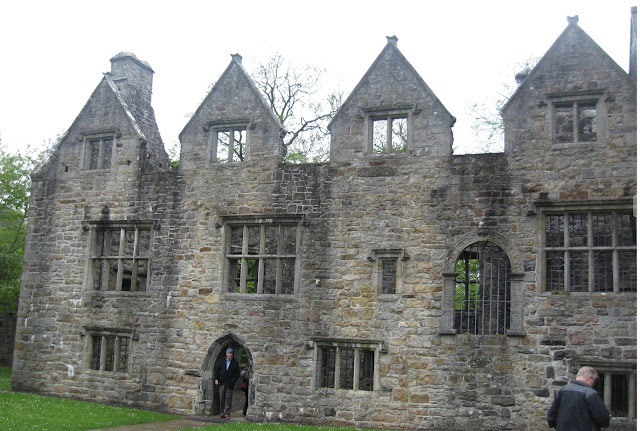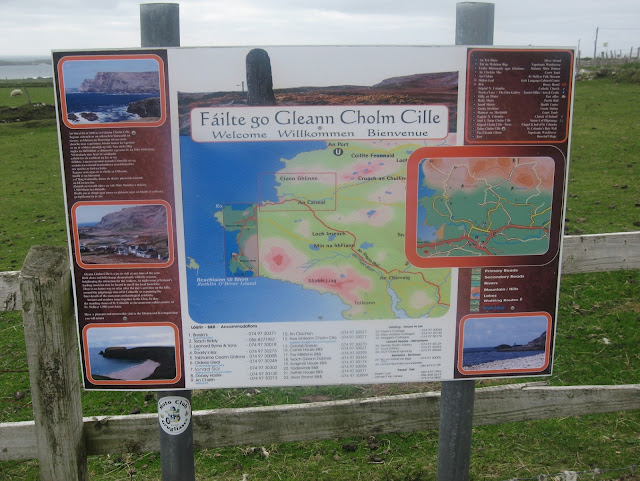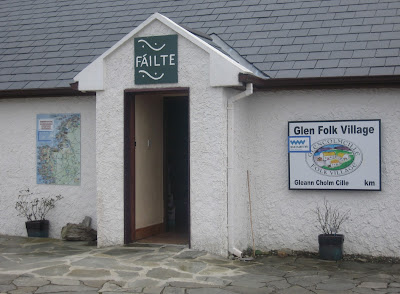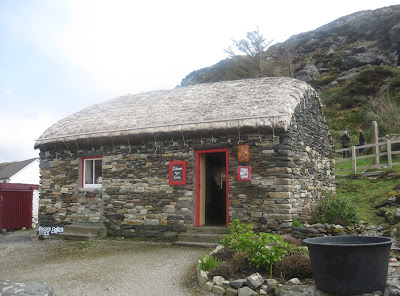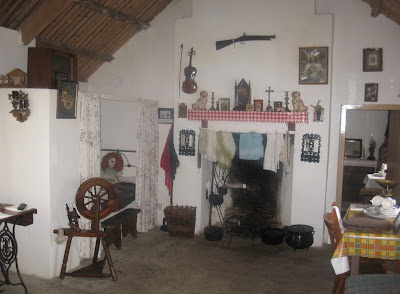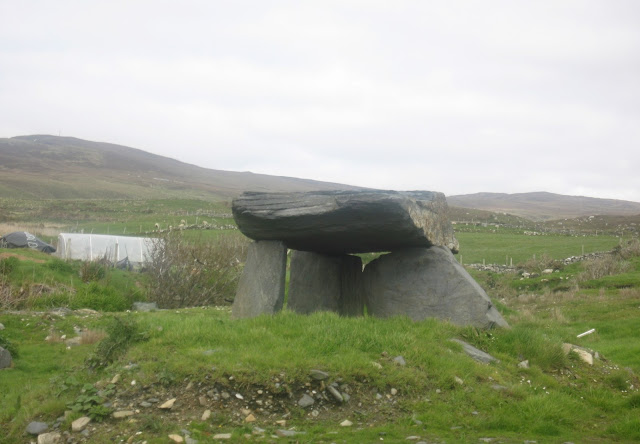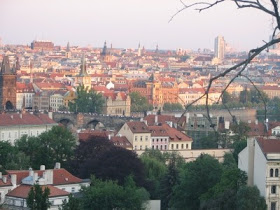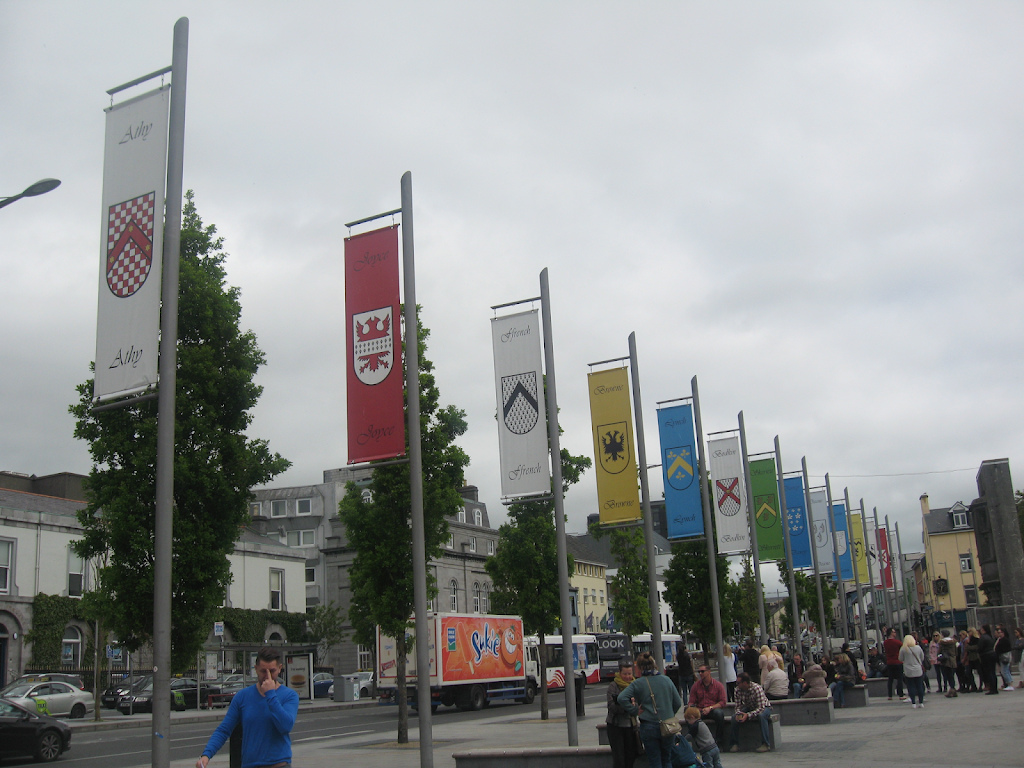Next on our driving tour of Ireland was the Wild Atlantic Way including the Dunfanaghy and Donegal Areas.
 |
| Horn Head Bay – Wild Atlantic Way Ireland – photo by Ricardo Cabral |
We learned a lot about Ireland’s Great Potato Famine of 1845-50 while visiting Dunfanaghy and Donegal on Ireland’s Wild Atlantic Way. But you can see evidence of its devastation at many if not most Irish Cemeteries and towns. In Dunfanaghy you can find a large, rounded-hill of earth surrounded by an iron railing marking it as a famine grave.
Ireland lost about 25% of its population, about 1.5 million people, during the Great Potato Famine. Although rarely mentioned in tourist books if you look there are remnants of the famine, everywhere.
The Old workhouse is within walking distance of Sheep Haven Bay and Tramore Beach near the market centre in Dunfanaghy. Admission is free with some paid exhibits. The Workhouse is now a heritage centre where they tell the story of Wee Hanna a victim of the famine and former resident of the workhouse.
Workhouses were set up to house the poor by the government beginning in 1847. Once people were desperate enough to enter a workhouse they surrender their freedom, had to wear uniforms and live under strict rules. For food, they received “stirabout”, which is a weak oatmeal porridge.
Glenveagh Castle
If you love traditional Irish music, it is one of the best places to hear it in Ireland. The local pubs have talented musicians nightly. There are many quaint shops in town to visit, many have woolen textiles of all types. Get a tweed cape, scarf, blanket, and more. Be sure to stop and enjoy the bakeries and restaurants which offer tea and scrumptious meals in Donegal We even found a drop-off laundry in the town center that provided one-day service.
 |
| McCafferty’s Irish Pub in Donegal |
Our favorite pub for evening drinks and traditional Irish music was a small pub near the Abbey hotel called McCafferty’s. Traditional Irish music was played nightly. We were very impressed with the mix of older and younger musicians and singers. Especially the younger musicians who were diligently learning from the masters. We noticed that several music festivals and concerts were planned in the area for country music groups from the U.S.
Donegal Castle
Most of Donegal Castle is in ruins but part has been restored and you can tour it quite easily. It is within walking distance of the Donegal town center.
According to Wikipedia :
“The castle consists of a 15th-century rectangular keep with a later Jacobean-style wing. The complex is sited on a bend in the River Eske, near the mouth of Donegal Bay, and is surrounded by a 17th-century boundary wall. There is a small gatehouse at its entrance mirroring the design of the keep. Most of the stonework was constructed from locally sourced limestone with some sandstone. The castle was the stronghold of the O’Donnell clan, Lords of Tír Conaill and one of the most powerful Gaelic families in Ireland from the 5th to the 16th centuries.”
 |
| Donegal Castle Great Room |
 |
| Information Center about the castle in the restored section |
After a tour of the castle head just across the street to our favorite restaurant for seafood, the Olde Castle Bar and Fish Dock Restaurant. You can get delicious chowder, seafood of all types, beer, and whiskeys to please all. The Restaurant is owned by the O’Toole family who always offers a Cead Mile Failte!
The next day we set out on a drive to see the countryside and found so much more. We stumbled upon Failte go Gleann Cholm Cille. This area is full of history, culture, music, and prehistoric settlements of the Irish people. It is the heart of learning to speak Gaelic with schools here designed specifically for that purpose.
Gleann Cholm Cille is named after St. Colm Cille, it is located SW of Donegal on the majestic Sliabh Liag peninsula.
We spent the better part of an afternoon at Glen Folk Village, founded by Fr. McDyer as a result of a notable community effort, to which the work of Oideas Gael continues to contribute. At Oireachtas, the major celebration of the Irish language and culture took place in October 1989.
Glen Folk Village
We traveled up and down country roads along the coast near Donegal and Dunfanaghy . A beautiful area with sea views, beaches, and many, many sheep farms. In the middle of one of the sheep farms, we came upon an ancient grave marker.
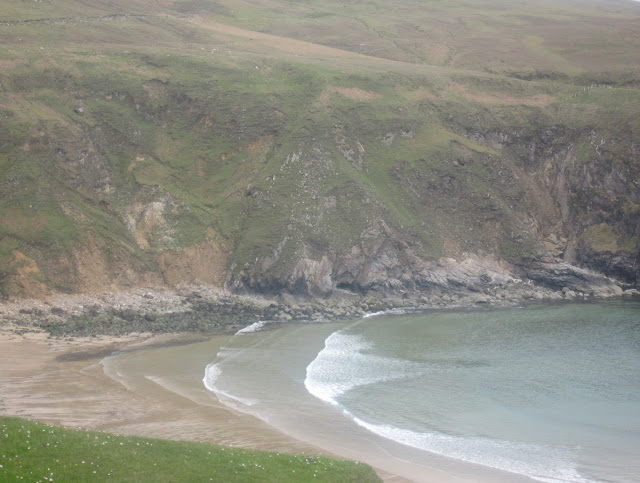 |
| View from the top of hills near Donegal looking down |
Don’t forget to go golfing at the Donegal Golf Club, Murvagh, Laghey, Co. Donegal, Ireland Tel: 353 (0) 74 97 34054
Donegal Golf Club or Murvagh as it is commonly known, is a magnificent par-73, measuring 6,753 meters true test of golf. It is a testament to the late Eddie Hackett’s ability to design spectacular links courses. After completing Waterville and Connemara he was given an opportunity to flex his muscles on a promontory in Donegal Bay.
He recalled with great modesty “The greens are natural sites: only the level of some them were adjusted by hand. All I had to do was develop the course with what nature provided”. One of the feature holes is 174 meters 5th to a plateau green with Donegal Bay in the background and no bale-out front or sides, a truly magnificent hole.
